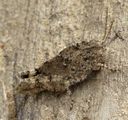Pardalophora
Pardalophora
Classification
- Phylum: Arthropoda
- Subphylum: Hexapoda
- Class: Insecta
- Order: Orthoptera
- Suborder: Caelifera
- Family: Acrididae
- Subfamily: Oedipodinae
- Tribe: Hippiscini
- Genus: Pardalophora
Pronunciation
How to pronounce Pardalophora: //pɑːrˈdæˌloʊfərə//
These audio files are automatically generated. While they are not always 100% accurate, they are a good starting point.
Images






Summary
Pardalophora is a genus of large band-winged grasshoppers in the Acrididae family, primarily found in the Nearctic region. Famous for their size, varied wing colors, and distinctive morphological features, they are prevalent in grassland environments.
Physical Characteristics
Large grasshoppers that can be startling when they fly due to their size. They produce a rustling sound in flight though they do not crepitate. Wing colors can vary from yellow to orange, red, or deep pink, with species-specific variants.
Identification Tips
Distinguished from Hippiscus by having smaller heads, more sculptured bodies, and a pronotum ridge cut distinctly in front of the center. Distinguished from Xanthippus by a more evenly elevated median pronotal ridge and typically less roughened head and pronotum.
Habitat
Primarily inhabit sunny grassland areas, ranging from open plains grasslands to hilltop glades in forests. They are found mostly east of the Rocky Mountains, with some species present in isolated populations along the west base of high mountains.
Distribution
Generally distributed in the Nearctic region, with varying specific distributions: P. haldemanii and P. saussurei mostly on the Great Plains; P. apiculata found in northern areas and southern populations; P. phoenicoptera in the southeastern regions.
Diet
Mixed feeders that prefer grasses but also consume broad-leaved plants, other dead (or live) insects, and can exhibit cannibalism under certain conditions.
Life Cycle
Overwinter as partly grown nymphs, with adults appearing in spring and early summer; P. apiculata is notably early with adults in late March or early April. Eggs are laid in spring/early summer and hatch in late summer or autumn. Eggs may overwinter before hatching primarily in northern areas.
Reproduction
Eggs are laid in spring and early summer, typically hatching in late summer or autumn. Some eggs may require one or more winters to hatch.
Predators
Specific predators are not detailed, but in general, large grasshoppers often face predation from various insectivorous animals.
Ecosystem Role
As herbivores, they play a role in the ecosystem by feeding on grasses and other vegetation, potentially affecting plant community composition.
Tags
- Orthoptera
- Acrididae
- grasshopper
- Pardalophora